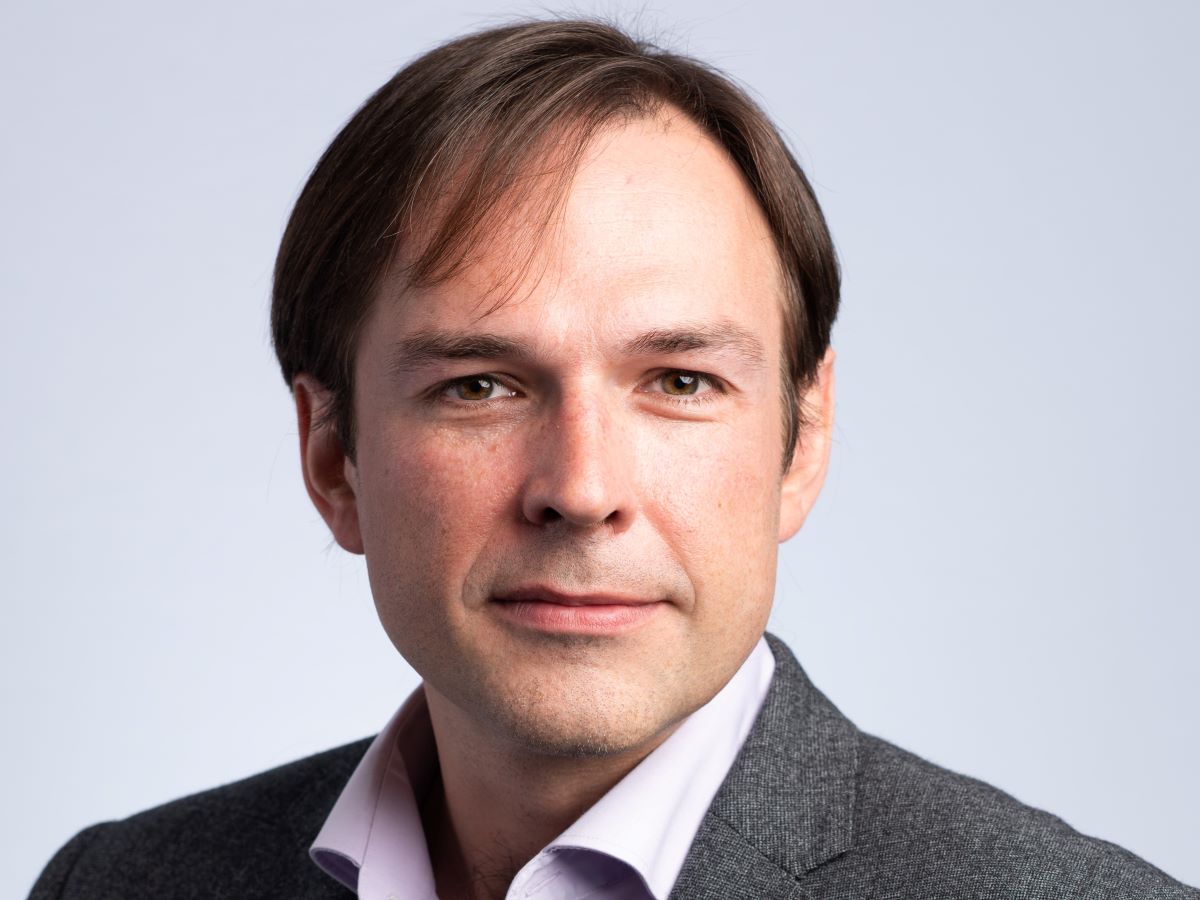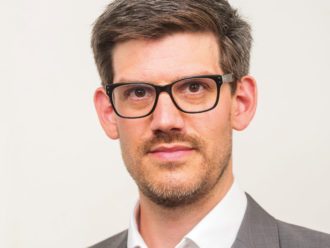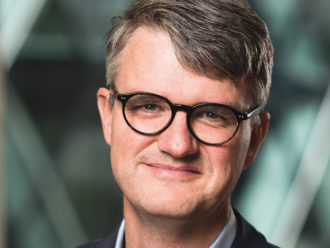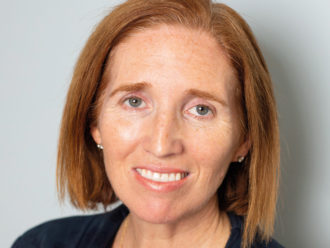Nico Aspinall, CIO at the People’s Pension and B&CE, discusses how he steered the scheme through the pandemic, having a high active share and what the future of DC investing could look like.
Your assets have almost doubled to £11bn in just two years. How are you managing such growth?
We invest in pooled funds. There are 17 of them, which are mostly life company pooled funds managed by State Street.
Essentially, we have a manager of manager-type structure. We use Northern Trust as a custodian to create multi-asset funds out of our portfolios, which is quite a scalable model.
Some of those flows you mentioned are obviously due to market returns with 2018 and 2019 being stellar years, but a lot of that, between £2.5bn and £3bn a year, are contributions.
We invest those contributions making sure that there are asset allocation tools to point those flows in exactly the right place.
The Covid pandemic is having a dramatic effect on the global economy. How is this affecting your scheme?
The biggest impact has been on the operational side. Before the pandemic, the team worked in an office five days a week, with Northern Trust and State Street attending meetings in person. But in March and into April we had to understand how to work in a home environment.
This involved organising things like having Bloomberg terminals in peoples’ homes, supporting our suppliers and just making sure that the control environment was not weakened.
My role is not just at the People’s Pension but also involves many other responsibilities for its parent company B&CE, some of which required wet ink signatures with managers. Moving a lot of our legacy processes, such as signatures, onto online processes was a big part of the challenge.
Operationally, the move into working from home was a big event and we certainly identified a lot of risks in the world of the unknown. These included the impact on markets. Will our funds still be able to price if markets close? Will central bank close markets for reasons of market panic? There are many other pieces of operational risks that we were tracking.
I know asset prices were not exactly smooth and orderly but there were a few big risks that we were focussed on in terms of the markets. Some emerging markets were closed for periods and we were conscious of that.
On the investment side we are most concerned about currency risk. We are a long-term investor and so we understand that equities can be volatile, but they have probably been under-volatile for quite a period. March was probably more than we expected but it is part of a broader return to normality in terms of volatility.
We were focussed on sterling’s precipitous decline in March. We have a derivative overlay for our currency hedging. That is how we hedge our US, European and Japanese exposures, so as sterling was falling we were conscious of the big negative cashflows that were coming. We had to do quite a lot of work to make sure those could be covered and that we would not be forced sellers at low points in the cycle.
But to some extent this reflects a welcome return of volatility. If I look at 2019, in September the fixed income fund outperformed a strongly performing equity fund. It is a crazy world. The first quarter was painful, but it was also more of a return to a textbook investing environment than we have seen for a while.
We aged a lot in March and into April, but it reminded us about getting back to the investment thesis.
Over the past 10 years, passive funds have done well, whereas active funds have struggled to outperform. You predominantly invest in passive equities, so how will you fare in this new, volatile environment?
You have to remember that we are a growing fund. Our average member is far from retirement. Volatility for a 30-year-old means cheap assets in the long-run so the sell-off in equities in the context of their lifetime savings journey is not the worst thing ever. If we were a defined benefit scheme with a de-risking plan in place and saw our liability hedge suddenly rise, that could be dramatically more painful.
We transition over 15 years to fixed income from equities for members who are close to retirement. That journey worked well. People closer to retirement, certainly those at retirement, didn’t suffer losses during that period. If your retirement is five to 10 years away then there is time to recoup any losses, but these were quite minor.
Volatility in general can mean cheap assets and we have got fantastic pound cost averaging from members frequently contributing to the portfolio over the period.
On the broader question of active versus passive, it is still difficult to be an active manager in this market. I would not frame us as being a passive investor. Market cap is the lowest cost and simplest route to access a market but is not always the best. We have to justify the relatively substantial deviations that we make away from that. We have a multi-factor portfolio for about 20% for the portfolio. That is our most aggressive fund in terms of deviating from the market cap index, the holding is a bit less in the default fund which is around 15% to 16%. Then we have an adaptive cap portfolio where we essentially equal-weight to the mega-cap stocks from a market cap portfolio and invest the proceeds in smaller cap stocks. So, we have some reasonably substantial deviations from market capitalisation and most people wouldn’t see that as pure passive.
We see passive as one tool and do not think that anyone should just dive in there. Markets are clearly not efficient, but that is not to say that we have the secret source or the understanding of how to beat them.
The longer your time horizon, the more obvious certain trends could become, the more conviction you could have in them and the more competitive advantage you might be able to get from them. Take climate change. If we look to 2030 or 2050 will there be more carbon dioxide burnt by the economy or less? The answer is relatively obvious so we believe you could deliver a bit more value by tilting away from fossil fuels. Then it becomes a process of deciding how you do that, which is broadly where we are at this point.
We do not see ourselves as passive investors, we call it systematic investing. There are passive investors who blindly follow market capitalisation-based indices. They may well engage with their managers who manage those assets to ask them to exclude the lowest ESG scoring companies or engage with them.
We do these things, but we do not leave it there. As an institutional investor who has a good sense of institutional values, understands its role in the value chain and can build an in-house resource which can kick the tyres of managers and the data, we think all of these activities will add value over the long term.
So, investing in passive funds would not mean blindly following the market capitalisation of indices?
We are on a journey. We started our conversation with the fact that our assets doubled in the past two years. We have to plot out the balance between us building a team in-house, how long it takes to do that, the activity we need to do before that and obviously the potential for additional costs. If you catch the wrong point in the cycle there you could just be adding costs without delivering returns and, to put it slightly tongue in cheek, then you are just an active manager.
So, we have to evolve at the right pace, with the right principles. But we think that if you are an institution who understands yourself and you have strong beliefs, then by expressing them in your portfolios, you should get a critical advantage over your passive player on that basis.
Has your rapid growth led to changes in the type of assets you are investing in?
Yes. We have some listed infrastructure in a multi-asset ETF. For property, we invest through a global REIT [real estate investment trust] index. We see those holdings as the future of where we would like to get to in more direct holdings, but that is beyond our complexity to deliver value from right now.
We have to recognise that due to auto-enrolment we serve a community of 90,000 employers in our scheme and there are a lot of administration costs that go with that. We do not have a huge investment budget compared to a defined benefit scheme and we have to include all of our costs in our charges. Obviously, that is important for investment decisions, we are not a net-return budgeter. We have to understand the full cost chain and that prevents us at this point from going directly into property or infrastructure until we get more scale.
We see those listed holdings as place holders. We know that we would like to do more but we need to have the scale and the right approach with the manager to make sure they understand it cannot be a two and 20 model when we would get into venture capital and private equity. That is not appropriate for our members. We are not sure if that is appropriate for any kind of member and we cannot hide it so we just will not accept those kind of fee deals.
For investments in property or private equity, we will also have to solve the valuatino problem and make sure we are not giving away all profits to someone who has only been a member for a day while a person who suffered the past 10 years of costs retired yesterday. We need to make sure that valuation mechanisms are equitable between our members.
Let’s talk about risk management. You described your approach earlier as systematic. What does that mean in the context of the rapidly falling markets we saw earlier this year?
A lot of what we do on risk management is to think through problems in advance. We have re-balancing tolerances around our asset allocation. The consideration then becomes do you let the auto-pilot carry on or do you intervene?
A moment where we had to pause was when we can close to the asset allocation tolerances and sold bonds and bought equities around March 20. We sat there, looked at our numbers and engaged with our managers about liquidity in the bond market and asked ourselves if there a reason why we would not allow this to happen? We came to the conclusion that this is why we put these rebalancing tolerances in place to begin with. We felt it was an appropriate decision when we set the asset allocation up and following that through felt like the right decision.
The FTSE100 was at 5,000 points back then and is now at around 6,000 so members have benefited from that re-balancing. About £300m was transferred into the market which felt like a big moment for us. So that was a case of the risk management in advance doing its job. Back in March, everything was happening. So, having the ability to go back to that blueprint and ask ourselves’ if this it remained true was important.
Where we considered more strongly taking a different option was the sterling hedge, where a lot of things came together. Until various central bankers and the treasury had spoken, it was not clear if the UK would have a worse outcome than other nations. So, we kicked the tyres a bit more strongly on our original currency hedging hypothesis.
Essentially, you try and do two things, first assess whether this is a risk that is being rewarded, and we believe that currency risk is in the long run an unrewarded risk so you should just hedge it. Then there is an efficiency point. We hedge 70% of our portfolio. But if you think that there is a special insight you have where the market is way off and in theory you could be braver because there was reward in doing something differently. So as sterling went down to 1.12 against the dollar, that was quite far off the long-term valuations we were hearing from managers and we were seeing negative cash-flows coming out. That helped us endorse the long-term position of taking what felt like a loss and then making sure we were capturing some of the gains. But if it had kept making a loss, that would have been a different case study to explore.
The long-term trajectory of the pound, say over 10 years, is difficult to predict.
Governments around the world have printed an unprecedented amount of money. Is this a competitive devaluation world? Is this a world where the country that does the least printing suddenly has an appreciation in their currency? Will it be tied into the dollar losing its exorbitant privilege of being the world’s global reserve currency? Does Brexit matter in terms of the trade deficit?
There are a lot of things you could draw into a 10-year prognosis. Some of them will hinge on relatively leveraged events on 3 November (the US presidential election).
You can tie yourselves in knots over these pieces of information, but we do not have the skills and expertise to do that work in house. We do not think this work is more important than asset allocation or long-term planning with the trustees around climate change, but the point where currency risk becomes more important is as the asset size grows. This might become something we could either take on or hire a more active manager, but right now we do not think that is where our governance priorities sit.
You mentioned Brexit and have a relatively high allocation to UK equities. Are some of the risks priced in?
There are two things. One, we are a long-term investor so are not timing markets. Also, this is a UK workforce, most of whom will retire in the UK. We recognise our members are working for these companies. Investing in pound-denominated assets helps as well in terms of currency hedging.
There are a number of different pieces here, but we need to explore the free movement of capital at some point. If I have a worker in the North East of England, we suck money out of his employer’s pocket. Why should that go exclusively to capital investments around the world?
We do not have much of a UK bias but there is a bit of a legacy of investing in market cap. I am not sure if the mega-cap or listed equity space is the right place to express that kind of UK bias. We should have a sense that this is UK money from UK employers which should go back into UK companies. That does not mean that we have to back individual companies or industries that are failing. We are not here to do bailouts of companies or industries that are struggling to exist in the future economy, but we need to have a sense that the UK is the place where this money came from and ultimately will go back to.
How you are implementing responsible investment strategies across your scheme?
We see responsible investment as being three activities: investment, exclusion and engagement. First is investment, which is about taking data, asking ourselves whether a portfolio construction technique using it can add value and giving ourselves some belief and conviction in that. Ultimately, if we think that data in our portfolio construction technique can add value for members then we have to do it. Secondly, we may not have the data or the conviction but the topic itself might only affect a small number of companies, for example, controversial weapons, so we can exclude it. Thirdly, if we are exposed to an issue, then we should be engaging with companies on it. A passive investor would put that first because they feel obliged to hold every company in the index. There are companies where we fundamentally think that by not holding them, we can add value for our members. That does not mean engagement is less important, it just means we get a cleaner portfolio.
Looking at your largest 100 holdings, you are invested in a lot of oil companies. How are you engaging with them?
The difficult bit is that if you look at these big oil company names, a lot of them have some pretty big green energy holdings. A lot of the work we have done around climate change is analysing if we can get rid of these companies or would that have other detrimental effects? Adaptation scores or green energy scores shows that if you follow a strict exclusion approach towards these companies then you lose out a lot in terms of green technology.
The engagement process is about that challenge. If there are 100 fossil fuel stocks, then we will not need all of them in our portfolio. We can be more sophisticated than that. If you are more of a green energy company than a brown energy company then you are attractive to us. There is a way of saying to them: “This is where the line is. If you are close to the line, you probably would want to run faster. If you are on the wrong side of the line, then not only are we not going to hold your equity, but at some stage we are not going to refinance your bonds either.”
It is with the cash, the liquidity financing, that probably the most impact comes we think. We want every company to understand the principles by which we invest, broadly that is the best way for them to understand why they got an investment. Over time we want to tie the bond finance to the equity finance and get most value from our engagement.
What are the People’s Pension’s key targets over the medium term?
This is a governance journey for us. We now have £11bn in assets, in five years’ time we will probably be looking at £20bn to £30bn. Very few institutions of that scale were created in such a short period of time. That has pros and cons.
The cons are probably the pace of that, we need to grow our investment capabilities as rapidly as we can. The pros are that we do not have to go through all the mistakes other institutional investors have, we can probably get to the punchline a bit quicker and learn from them as much as possible.
We will be a lot more focussed on tech and on the systematic focus, which was not available before, and all the while making sure that we understand how we add value and deliver that in a good governance environment.




